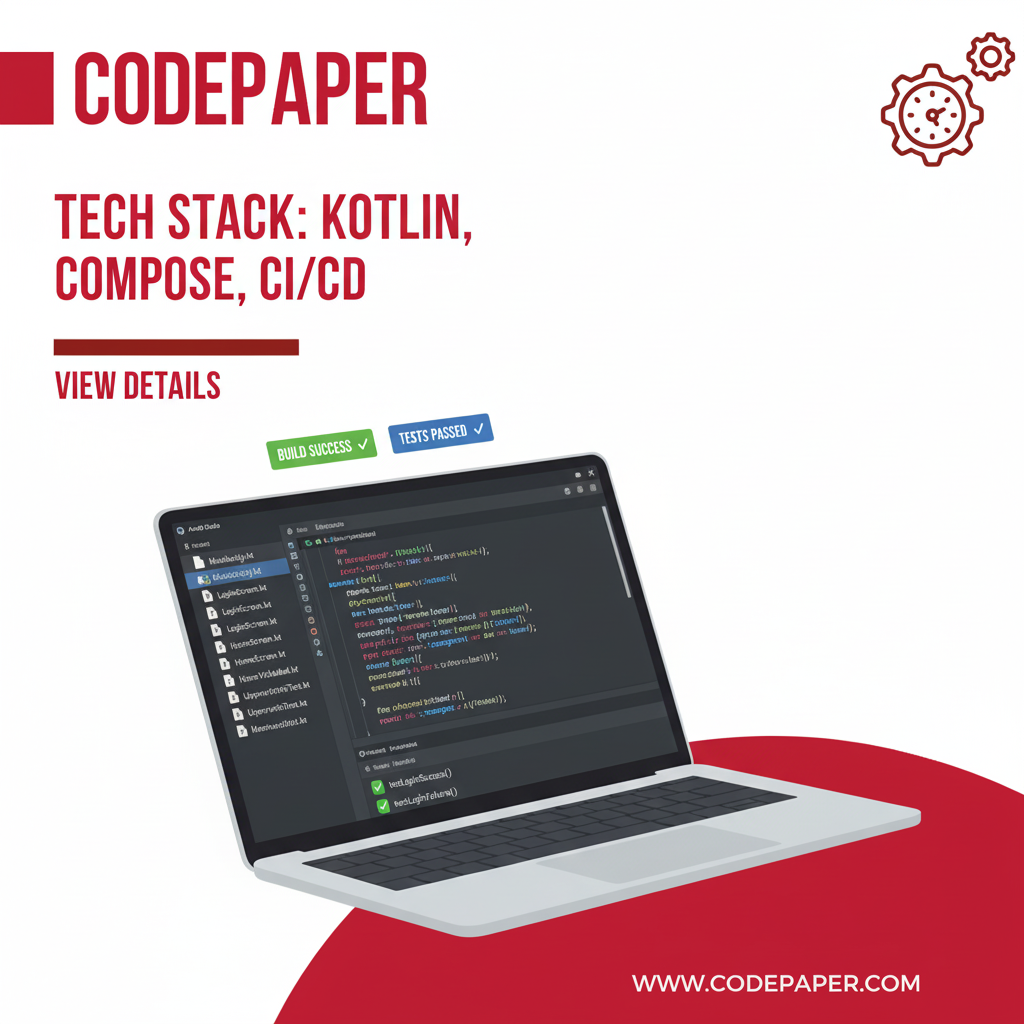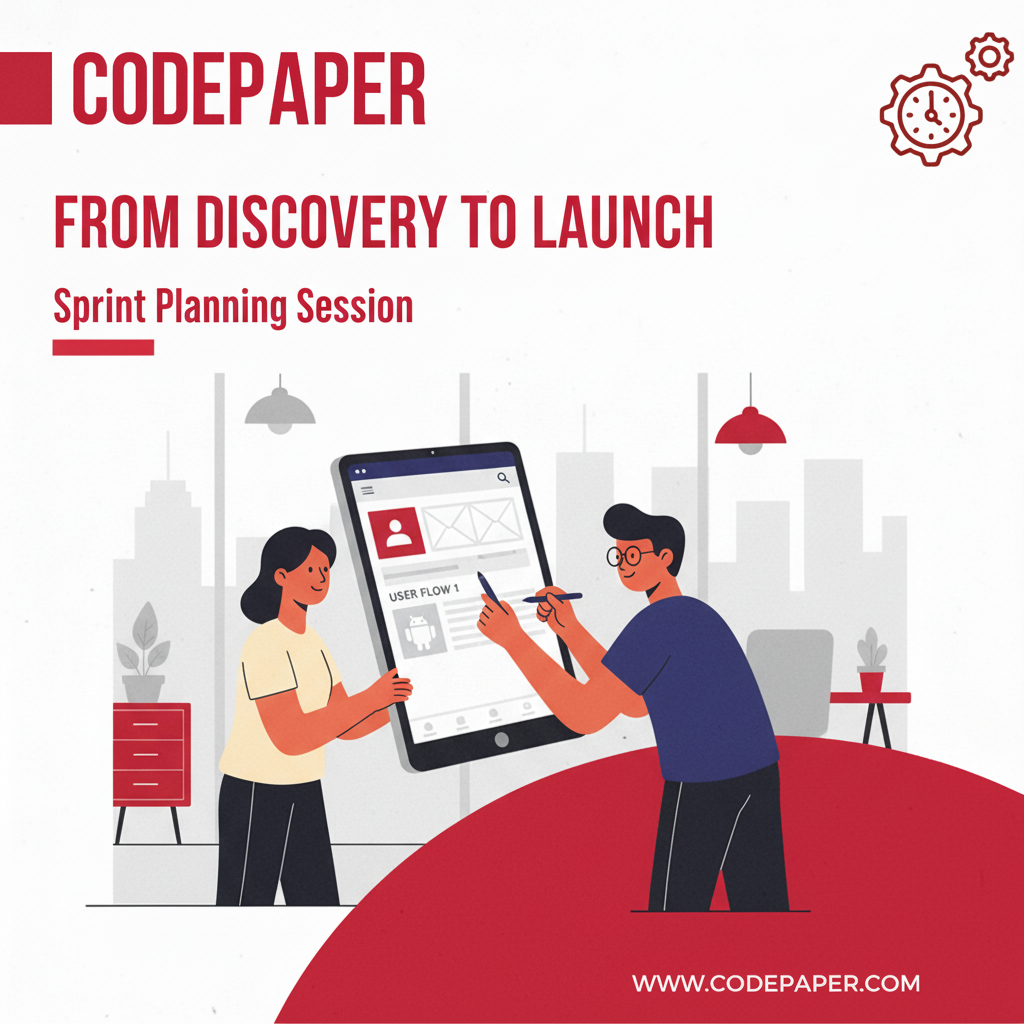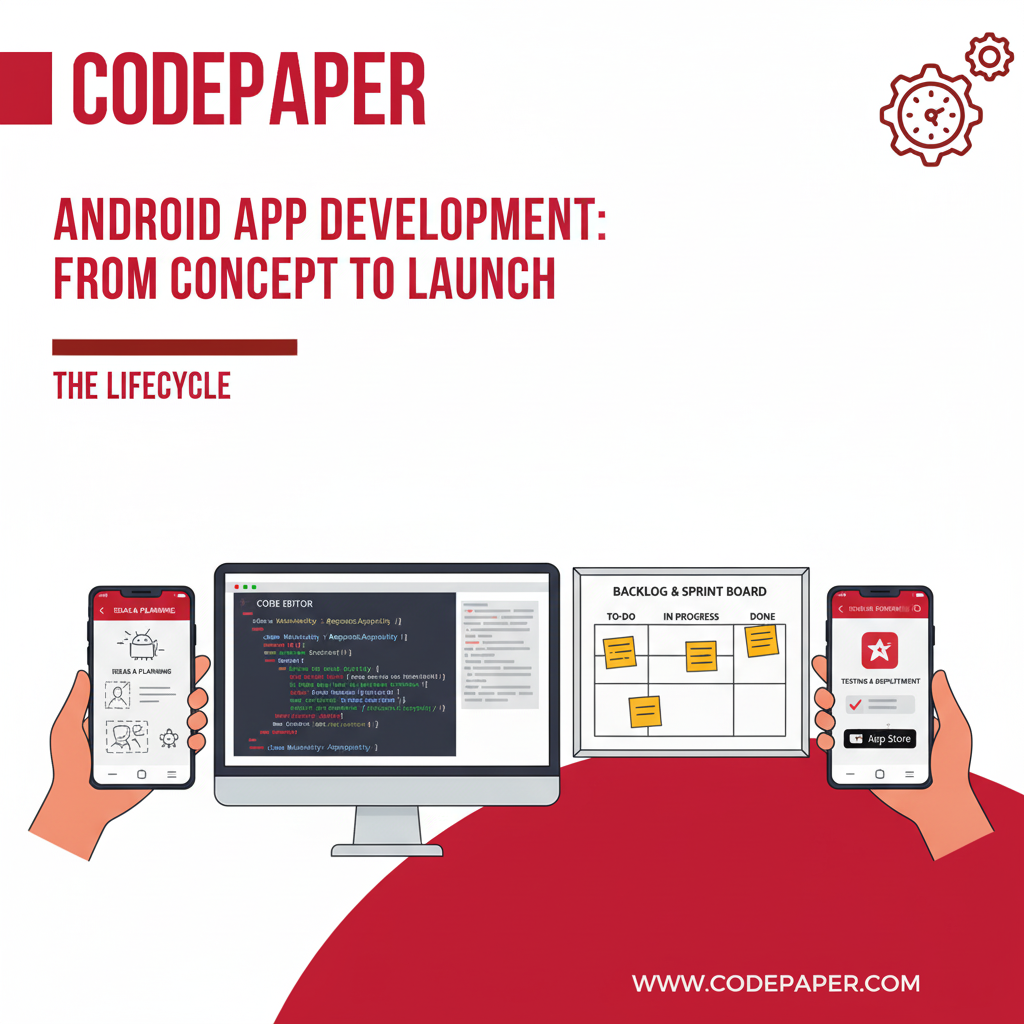Android Application Development Services: The 2025 Buyer’s Playbook for Toronto and Canada
TL;DR: If you’re evaluating android application development services, focus on outcomes: validated product strategy, clean Kotlin/Jetpack Compose code, CI/CD, security, and a post-launch plan. At Codepaper Technologies Inc. (Unit 20 – 120 Woodstream Blvd, ON, L4L 7Z1), we help Toronto and Canadian teams ship reliable Android apps—faster—with a managed delivery model, from MVP to enterprise scale.
Quick Answer
Looking for android application development services? In ON at Unit 20 – 120 Woodstream Blvd, L4L 7Z1, our team delivers discovery, UX, Kotlin/Jetpack Compose builds, automated testing, Google Play launch, and ongoing optimization for Toronto and Canada-based brands.
Choosing the right android application development services can determine whether your product becomes a market-ready success or stalls in a never-ending cycle of rework. This guide gives decision-makers a practical blueprint—what to ask, which risks to avoid, how to budget, and how to measure quality—so you can move from idea to impact with confidence. We’ll cover discovery, UX/UI, Kotlin and Jetpack Compose, API design, DevOps and CI/CD, QA, security hardening, Google Play release, and post-launch improvements. We’ll also compare native and cross-platform approaches and share a realistic delivery plan tailored to Toronto teams and Canadian organizations.

What are android application development services?
Android application development services encompass the end-to-end work required to design, build, secure, deploy, and evolve an Android app. For most product teams, that includes discovery and roadmapping, UX/UI design, native development (Kotlin and Jetpack Compose), backend services, analytics, automated testing, release management, and continuous improvement. A mature partner will also bring product coaching, data-driven experimentation, and DevOps capabilities that reduce cycle time and improve reliability.
For brands that need a partner in the Greater Toronto Area, Codepaper provides full-cycle delivery and strategic guidance. If you’re comparing local options, you can benchmark capabilities against our app development in Toronto page and our custom software development company in Toronto services overview.
Why native Android (Kotlin/Compose) vs cross‑platform?
There’s no one-size-fits-all answer. Native Android (Kotlin + Jetpack Compose) typically delivers the best performance, access to platform APIs, and a refined Material experience. Cross-platform frameworks can reduce initial code duplication when iOS is required on day one, but they may introduce constraints, especially for complex animations, background services, or OEM integrations.
If you’re exploring trade-offs, this balanced overview of native vs. hybrid apps provides helpful context. Use it to inform—but not dictate—your decision. Your product strategy, device access needs, in-house skills, and release cadence should lead.
The delivery blueprint: from idea to Google Play
Below is a proven sequence we use to ship Android apps reliably and reduce rework. These steps align to agile ceremonies but remain grounded in business outcomes.
1) Discovery and product strategy
- Stakeholder interviews and value hypotheses
- Competitive scan and baseline analytics
- App map, initial backlog, and success metrics
Outcome: a validated scope for your MVP or iterative release, with a crisp answer to “Why this now?”
2) UX research and UI design
- User flows, wireframes, and interactive prototypes
- Design system based on Material 3
- Accessibility-first practices from day one
3) Engineering setup (Kotlin + Compose)
- Modular architecture (e.g., MVVM + Use Cases)
- Dependency injection and configuration management
- API contracts, GraphQL/REST clients, and offline sync patterns
4) DevOps and CI/CD
- Automated builds, tests, and code quality gates
- Feature flags and environment promotion
- Crash reporting and observability wired from the start
To understand how we cut delivery time without sacrificing quality, see our perspective on shipping faster without compromise.
5) Quality assurance and security
- Unit, UI, snapshot, and integration tests with coverage goals
- Static analysis, secrets scanning, and secure data storage
- Hardened networking, certificate pinning, and auth flows
6) Google Play launch and growth
- Release tracks (internal, closed, open) and staged rollouts
- Store listing optimization, A/B testing, and ratings strategy
- Post-launch analytics dashboard and experiment backlog

Process at a glance
| Phase | Primary Owner | Key Outputs | Typical Duration |
|---|---|---|---|
| Discovery | Product + Lead Engineer | Hypotheses, KPIs, roadmap, backlog | 1–2 weeks |
| Design | UX/UI Designer | Flows, prototypes, design system | 2–4 weeks |
| Build | Android Engineers | Kotlin/Compose app, services, tests | 4–12 weeks |
| QA + Hardening | QA + Security | Test runs, fixes, perf tuning | 1–3 weeks |
| Launch | Release Manager | Store listing, staged rollout | 3–7 days |
Cost and timeline: what buyers should expect
Budgets vary by scope, integrations, and compliance needs. As a directional guide, MVPs often land in the mid five-figure to low six-figure range (USD), with more complex enterprise apps scaling further. Timelines typically range from 8–16 weeks for focused MVPs to multi-quarter programs for feature-rich platforms. When comparing proposals, prioritize clarity of scope, staffing plan, delivery cadence, and contingency handling over headline price.
Our managed delivery approach, supported by CI/CD and strong DevOps, is designed to compress cycle time while maintaining quality. If you want to compare agencies in the region, see how we position among a web development company in Toronto cohort and why customers choose us for speed and reliability.
What “good” looks like in android application development services
Architecture and code quality
- Idiomatic Kotlin with clear module boundaries
- Jetpack Compose for modern, maintainable UI
- Offline-first patterns with robust error handling
Security and compliance
- Secure storage, network hardening, and secret management
- Threat modeling during discovery and sprint planning
- Privacy-by-design and data minimization
DevOps, CI/CD, and reliability
- Automated test suites and quality gates before release
- Crash reporting, performance monitoring, and alerting
- Rollback strategy and blue/green or staged release patterns
For a deeper view into our end-to-end engineering philosophy beyond mobile, explore our best app developer in Toronto insights and the way they connect to our broader software practice.
Local context for Toronto and Canada
We collaborate with product teams across Toronto, the GTA, Vancouver, and nationwide. Our delivery center at Unit 20 – 120 Woodstream Blvd (ON, L4L 7Z1) is easily accessible via Highway 7 and Highway 27, with Highway 407 nearby—useful for on-site workshops, executive alignment sessions, and design sprints. We also fully support virtual collaboration to keep releases on track across time zones.
Local Tips
- Tip 1: When planning in-person workshops, account for Highway 7 and Highway 27 traffic near Woodstream Blvd; morning arrivals tend to be smoother before 8:30 a.m.
- Tip 2: Winter road conditions can impact travel time; consider hybrid sessions during snow advisories to keep sprint ceremonies on schedule.
- Tip 3: For leadership reviews, we can host at our office (Unit 20 – 120 Woodstream Blvd) or meet near Highway 407 for quicker access from across the GTA.
Native vs cross‑platform: a quick comparison
| Criteria | Native Android (Kotlin/Compose) | Cross‑platform |
|---|---|---|
| Performance | Excellent and predictable | Good, sometimes limited by abstraction |
| Platform APIs | Full, first-class access | Bridged; may lag on new features |
| UI Fidelity | Material 3, Compose-first experiences | Shared UI with adaptive layers |
| Time to Market | Fast for Android-only | Potentially faster for dual-platform |
| Long-term Maintainability | High, aligned with Google roadmap | Depends on framework stability |
Industries we serve: from MVPs to enterprise platforms
Our android application development services have helped organizations across fleet management, e-commerce (construction supplies), finance and banking, restaurant franchise management, solar energy products, sign tracking and TAS reporting, and manufacturing inventory management. Whether you need an MVP to validate demand or a secure enterprise rollout, we adapt our delivery model to your risk profile and timeline.
- Startups: Lean MVPs with analytics and rapid iterations.
- Scale-ups: Refactoring, feature velocity, and observability.
- Enterprises: Compliance-aware builds and integration with legacy systems.
If you’re balancing mobile with web or backend modernization, our 2025 bespoke software playbook explains how we unify product, engineering, and DevOps to accelerate outcomes.
How we reduce delivery risk
Managed delivery and clear cadences
We run short, outcome-focused sprints with demos, backlog refinement, and a standing release plan. You’ll know what’s done, what’s next, and how risks are being handled—every week.
Automation and quality gates
CI/CD pipelines run tests and linting automatically. Build failures stop the line. Release candidates ship through internal, closed, and open testing tracks before general availability.
Security-first posture
We embed threat modeling into discovery, secure storage and network patterns in development, and privacy-by-design across the stack.
When to add AI and data analytics
From intelligent search to personalization and predictive maintenance, AI and analytics can unlock value across Android experiences. We treat these as product bets, not buzzwords—prototyping with small, testable slices and guarding user trust. As your needs evolve, we can extend from mobile into data pipelines and dashboards.
If you’re exploring broader transformation beyond mobile, our team also supports cloud-native web, API platforms, and DevOps. Learn how we approach modernization alongside mobile by comparing vendors in the region as a web development company in Toronto cohort and through our custom software development company in Toronto services.
Mid-article consultation offer
Considering an Android MVP or modernization? Book a 30‑minute consultation to assess scope, risks, and delivery options. We’ll share a draft roadmap and a pragmatic plan to reach Google Play faster—without compromising quality.
Buyer FAQ: android application development services
How do I choose between native and cross‑platform?
Prioritize your product strategy. If Android is the primary channel or you need advanced device APIs and top-tier performance, go native with Kotlin/Compose. If you must ship Android and iOS simultaneously with shared UI, a cross-platform approach can be faster initially. Review constraints around animations, background services, and long-term maintenance before deciding. A brief technical spike often clarifies the best path.
What’s the typical cost for an Android MVP?
It varies by scope, integrations, and compliance. Many focused MVPs land in the mid five-figure to low six-figure range (USD), with enterprise needs increasing cost. Ask vendors to specify assumptions, staffing, release plan, and risk handling—not just a single number.
How long does it take to reach Google Play?
For a well‑scoped MVP, 8–16 weeks is common; complex platforms take longer. Strong product discovery, modular architecture, and CI/CD can compress timelines without sacrificing quality. Staged rollouts and internal testing reduce launch risk.
Can you work with our internal team?
Yes. We often co-build with in-house engineers, designers, and product managers. We offer staff augmentation and managed delivery, with clear ownership, knowledge transfer, and documentation so your team can operate confidently post-launch.
Do you support post‑launch analytics and growth?
Absolutely. We instrument analytics, define north-star metrics, and run experiments to improve acquisition, activation, and retention. We also manage release cycles, crash triage, and performance tuning to sustain growth.
Key Takeaways
- Define outcomes early—use discovery to validate scope and KPIs.
- Favor Kotlin + Compose when Android is strategic or performance-sensitive.
- Automate quality with CI/CD and staged rollouts to de-risk launches.
- Think in roadmaps: MVP, adoption, and optimization cycles.
- Choose partners who can scale from MVP to enterprise with security in mind.
